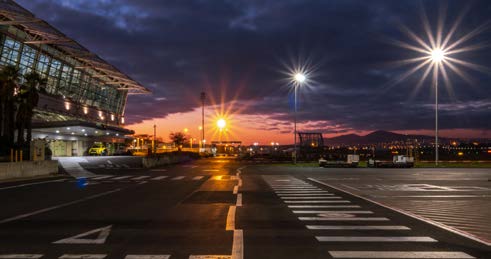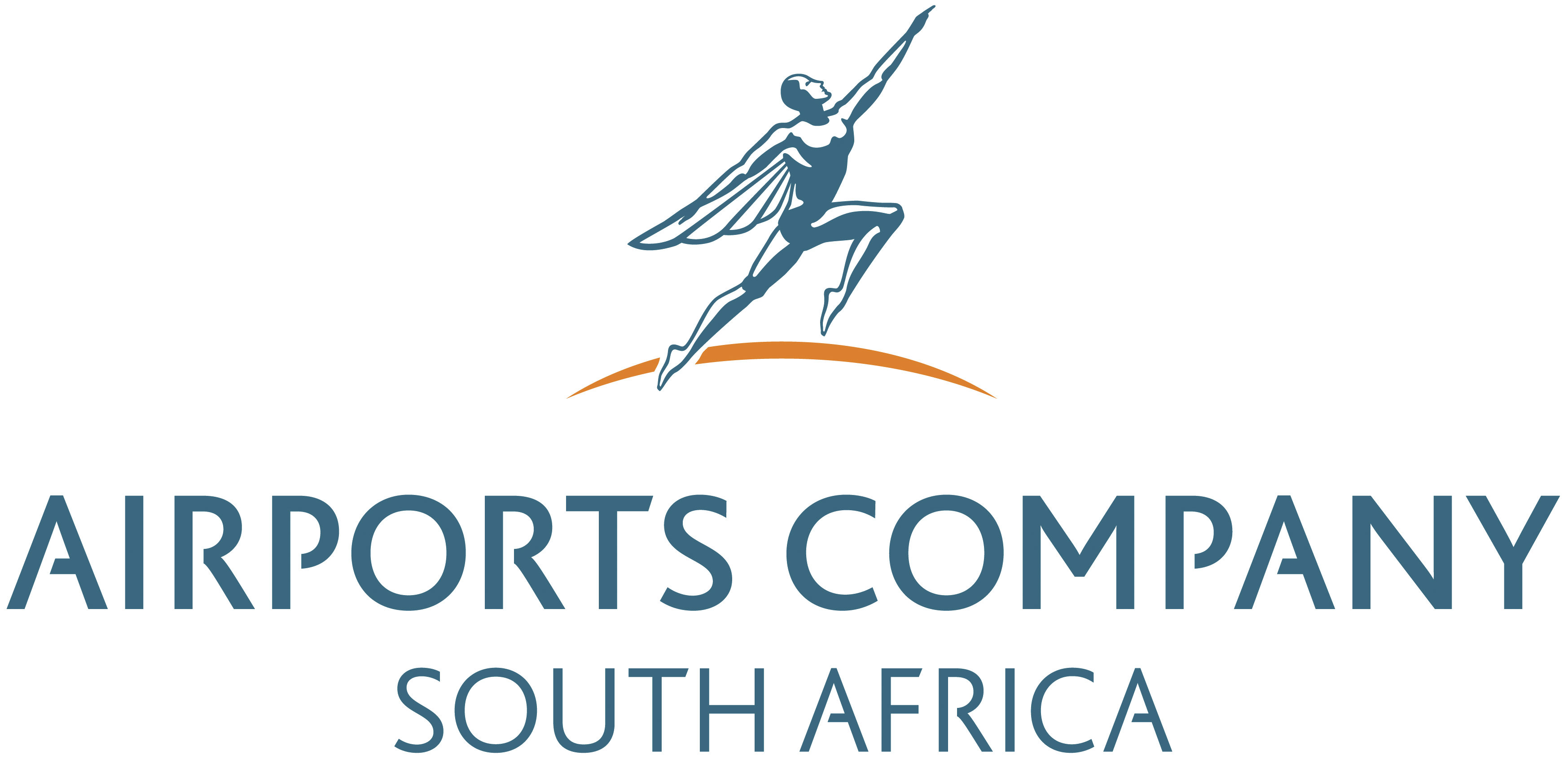Grow footprint

Overview
Our strategic focus on growing our footprint is a response to changing opportunities in the domestic, regional, and international air transportation markets. While growth is currently not a primary focus for the business, it remains a medium- to long-term focus as it is vital for sustainable value creation.
Within the context of our Recover and Sustain Strategy, we are therefore continuing to consider opportunities for growth by re-evaluating our investments and nurturing identified growth areas. Strengthening and expanding our presence in segments such as cargo handling will, for instance, allow us to expand on our core business activities and support our objective of diversifying our revenue streams. We are now also in a position to begin re-examining our plans to expand our route network, particularly in Africa.
This is supported by the fact that air traffic continues to recover globally with airlines continuing to demonstrate resilience and adaptability despite the challenges of the post-pandemic environment.
Industry wide, revenue-passenger kilometres (RPKs) grew by 55.5% year-on-year to February 2023 and bodes well for the current period. From a risk point of view, though, inflation is at its highest level in decades and many central banks have raised interest rates in response.
Higher interest rates and rapid increases in the cost of living have directly impacted on disposable income and this is likely to affect leisure travel as well as travel to visit friends and relatives.
As importantly, air cargo demand fell consistently during the reporting period, with total demand down by 11% compared to pre-pandemic figures in January 2023. This challenging economic environment for air cargo is expected to persist throughout the current period. IATA therefore anticipates that global economic growth will remain weak and that a slowdown in economic activity will be unavoidable in all major economies. This is likely to result in a more protracted period of recovery than we had anticipated.


Business development
We are nevertheless continuing to work closely with our partners to analyse and validate route performance in order to identify opportunities for retention and expansion. We also collaborate with key stakeholders - from tourism authorities to local government and provincial structures - in order to ensure alignment with the national trade and tourism agendas.
Prior to the COVID-19 pandemic, several airlines in North America, Europe and sub-Saharan Africa had announced their intention to commence direct services to and from South Africa, reflecting the importance they placed on growth opportunities inherent in the South African market. These plans were, however, disrupted by the COVID-19 pandemic and the resulting restrictions on international travel.
Over the past two periods, airlines have slowly been resuming or even expanding operations, although some airlines that existed prior to the COVID-19 pandemic no longer exist.
The following table presents a comparison between the airlines that were operating flights to and from our airports prior to the COVID-19 pandemic and those that are currently operating flights.
| Airlines | Pre-COVID-19 | Post-COVID-19 |
|---|---|---|
| Domestic | 7 | 5 |
| Comair Ltd [Kulula +British Airways] | ✓ | |
| FlySafair | ✓ | ✓ |
| Airlink | ✓ | ✓ |
| Mango | ✓ | |
| South African Airways | ✓ | ✓ |
| South African Express Airways | ✓ | |
| Lift | ✓ | |
| Cemair | ✓ | ✓ |
| International | 45 | 39 |
| Air Namibia | ✓ | |
| Emirates | ✓ | ✓ |
| Kenya Airways | ✓ | ✓ |
| Air Botswana | ✓ | ✓ |
| Qatar Airways | ✓ | ✓ |
| Fastjet Zimbabwe | ✓ | ✓ |
| British Airways [Mainline] | ✓ | ✓ |
| Ethiopian Airlines | ✓ | ✓ |
| LAM Mozambique | ✓ | ✓ |
| RwandAir | ✓ | ✓ |
| Turkish Airlines | ✓ | ✓ |
| Singapore Airlines | ✓ | ✓ |
| ASKY | ✓ | ✓ |
| TAAG Angolan | ✓ | ✓ |
| KLM | ✓ | ✓ |
| Malawian Airlines | ✓ | ✓ |
| Lufthansa | ✓ | ✓ |
| Virgin Atlantic | ✓ | ✓ |
| Air Mauritius | ✓ | ✓ |
| Air France | ✓ | ✓ |
| Air Zimbabwe | ✓ | ✓ |
| Cathay Pacific Airways | ✓ | |
| SWISS Air | ✓ | ✓ |
| Delta Airlines | ✓ | ✓ |
| Etihad Airways | ✓ | ✓ |
| Air Seychelles | ✓ | ✓ |
| Qantas Airways | ✓ | ✓ |
| Air China | ✓ | ✓ |
| LATAM | ✓ | |
| Proflight Zambia | ✓ | ✓ |
| Alitalia | ✓ | |
| Congo Airways | ✓ | |
| Saudi Airlines | ✓ | |
| EgyptAir | ✓ | ✓ |
| Fly Namibia | ✓ | ✓ |
| Israeli Airlines | ✓ | ✓ |
| Air Austral | ✓ | ✓ |
| Edelweiss | ✓ | ✓ |
| Condor | ✓ | ✓ |
| Air Tanzania | ✓ | |
| Iberia | ✓ | |
| Austrian Airlines | ✓ | |
| Air Madagascar | ✓ | |
| United Airlines | ✓ | ✓ |
| Joon | ✓ | |
| FlyCAA | ✓ | |
| Air Cote D'Ivoire | ✓ | |
| Air Uganda | ✓ | |
| Air Belgium SA | ✓ | |
| Air Peace | ✓ | |
| Total | 52 | 44 |
More specifically, the following airlines have introduced new routes centred around Cape Town International:

Maputo - Cape Town
4 x weekly frequencies

Mauritius - Cape Town
4 x weekly frequencies

London - Cape Town
7 x weekly frequencies

Brussels - Cape Town via Johannesburg
2 x weekly frequencies

Cape Town - Atlanta
7 x weekly frequencies

Washington - Cape Town
3 x weekly frequencies

Frankfurt - Cape Town
3 x weekly frequencies

Durban - Cape Town
14 x weekly frequencies
The following airlines have introduced new routes centred around O.R. Tambo International:

Brussels - Johannesburg
2 x weekly frequencies

Abidjan - Johannesburg via Kinshasa
4 x weekly frequencies

Manzini - Johannesburg
14 x weekly frequencies

Frankfurt - Cape Town
2 x weekly frequencies

Lomé - Johannesburg via Kinshasa & Libreville
5 x weekly frequencies

Richards Bay - Johannesburg
7 x weekly frequencies

Perth - Johannesburg
3 x weekly frequencies
The following airlines have introduced new routes centred around King Shaka International:

Durban - Cape Town
14 x weekly frequencies

Durban - Cape Town
2 x weekly frequencies

Durban - Harare: 4 x weekly frequencies
Durban - Kruger Mpumalanga: 4 x weekly frequencies
Durban - Gqeberha: 21 x weekly frequencies
The following airlines have introduced new routes centred around two of our regional airports:

Bloemfontein - Johannesburg
4 x weekly frequencies

Kimberley - Cape Town
4 x weekly frequencies
The recent and expected resumption of services as well as route expansions and new international routes are expected to add significantly to passenger traffic throughout the network, with O.R. Tambo International expected to recover 100% of its pre-pandemic international passenger traffic by end of 2024.
While O.R. Tambo International's passenger traffic lagged that of Cape Town International during the reporting period, this is because a significant proportion of the airport's capacity is yet to be restored, including the direct links to Hong Kong and Brazil. Further, a large part of the existing international route network is operating below pre-pandemic levels and frequency is expected to increase in FY2023/24. It should nevertheless be noted that deteriorating global economic conditions pose a major down-side risk to the recovery prospects.
Going forward, unserved routes in Africa, Europe, North America, Asia Pacific, and Latin America will be targeted for development.
Route development
ACSA is a founding member of several route development structures, and in collaboration with local government, facilitate wider access to air travel and transportation. Despite restrictions, most of these structures remained active throughout the COVID-19 pandemic.
While air travel activities are concentrated around the country's three largest metropolitans in Gauteng, Western Cape and KZN, however, unlocking air connectivity in/out of smaller communities for integration with the national air transport network remains a top priority for ACSA We therefore continue to work closely with local government to explore various mechanisms that will enable smaller communities to plug into the national air transport network.
During the reporting period, the following structures were active:
- Gauteng Air Access. The Department of Tourism actively drives route development for O.R. Tambo International in partnership with the City of Ekurhuleni, the Gauteng Tourism Agency, the Gauteng Growth and Development Agency and South African Tourism.
- Durban Direct, which operates in partnership with Dube Tradeport and the Department of Economic Development and Environmental Affairs.
- Cape Town Air Access, which operates in partnership with Wesgro (a trade and investment agency), Cape Town Tourism, the Department of Economic Development and Environmental Affairs, South African Tourism, and private sector partners.
- Garden Route Airlift, which operates in partnership with George municipality and the Garden Route District Municipality.
- Nelson Mandela Bay Airlift, which operates in partnership with Nelson Mandela Bay Metropolitan Municipality, the Eastern Cape Development Corporation, the Eastern Cape Parks and Tourism Agency and the Nelson Mandela Chamber of Commerce.
- Upington Airlift, which operates in partnership: in partnership with the Dawid Kruiper local municipality, the Department of Trade and Industry, the Department of Economic Development and Tourism and the local Chamber of Commerce.
Non-core revenue
Non-core revenue generated from business development advisory services and consultancy amounted to R12.9 million for the reporting period.
ACSA played a significant role in the successful operation of Richards Bay Airport by providing comprehensive airport management services. Working closely with Umhlathuze Municipality, we ensured that all aspects of airport operations including security, maintenance, passenger services and overall facility management, were effectively handled.
We also provided technical consultancy services at Wonderboom National Airport, which is owned and managed by the City of Tshwane. Our team provided valuable insights and guidance on various technical issues related to airport infrastructure, aviation regulations, safety protocols and operational efficiency. This collaboration allowed the City of Tshwane to optimise the functioning of the airport and to enhance its services for the benefit of stakeholders.
Advisory and consulting services
Our business model is based on leveraging our expertise in airport management, technical advisory services, business services and the training academy. However, with little or muted demand for technical advisory services since the advent of the COVID-19 pandemic, our approach has been to keep our staffing levels in this area of the business low and rather to partner with external advisors and/or consultants to address any expertise gaps in the provision of advisory services. In the long-term, any material gap in skills will be addressed in line with sustained demand from the market.
At present, our primary objective is to provide comprehensive advisory services to local airports. We recognise the significance of these airports as vital transportation hubs within their respective regions. By offering specialised expertise and industry knowledge, we aim to assist them in navigating complex challenges, optimising their operations, and achieving long-term success.
Commercialising our training academy
In order to capitalise on the opportunities available to diversify our revenue streams, we are in the process of transforming our training academy into an industry-wide African regional aviation training centre of excellence. The centre will be a stand-alone entity that will leverage our human capital, institutional knowledge, and experience to offer tailored programmes for both internal and external clients.
Outlook
The prevailing global economic challenges and mounting uncertainties, coupled with South Africa's projected growth for 2023 of below 1%, undeniably pose a significant risk to the overall recovery outlook. Consequently, in the short-term, we anticipate subdued growth in both passenger and cargo traffic. The persisting ambiguity surrounding South African aviation policies (i.e., domestic and international airlines licensing) continues to undermine confidence among airlines, while constraints on bilateral air-service agreements are poised to limit the recovery and expansion potential of air traffic.
Nonetheless, we remain committed to our Recover and Sustain strategy in managing our growth objectives, and when deemed suitable, acceleration of implementation of our Growth initiatives. Our approach involves the continuation of the capacity expansion programme that was already underway at the onset of the COVID-19 pandemic. Moreover, we are directing our 'Grow Footprint' pillar towards optimising capacity to support revenue diversification ambitions. We maintain a steadfast focus on the meticulous planning and execution of our Aerotropolis Strategy, coupled with expansion efforts targeting potentially high-growth markets across Africa.
Furthermore, we are dedicated to strengthening our airline route network, taking into account demand constraints. As of 31 March 2023, over 38 underserved destinations in 29 countries were identified, earmarking them for development in the medium- to long-term. Among these destinations, nine are situated in eight African countries, which represent the most promising region for expanding our footprint over the next decade.
Our ultimate goal is to establish connections to every major city in Africa, thereby diversifying our international source market portfolio and supporting Africa's broader regional integration objectives in line with the Abuja Treaty of 1991.
